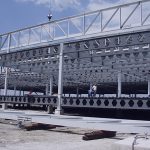All About Connections: How Different Types of Steel Beams Work
When it comes to construction projects heavily involved in steel structures, it’s important to understand the available steel beams that work best for your specific needs. Different structural components are required for their distinct properties, so choosing the right structural steel beam is critical since they are designed for precise applications.
If you’re wondering what type of steel beams you need, we’re here to give a lowdown on the different support beams you will encounter so you can arm yourself with enough information to make better decisions for your upcoming project. Here are the several types of structural steel beams:
C-Beams
Also known as channel beams, these are designed with top and bottom flanges to support a C-shaped construction, giving your structure better load-bearing capabilities and a stronger anchor.
It’s an odd shape primarily used in bridges, but their unique web holes make them a perfect alternative for wide flange beams since you can achieve the same result with fewer pieces. Other ways to use a c-beam include brackets, cladding, covers, grating support, stiffeners, reinforcements, and even decorative purposes.
I-Beams
Widely regarded as a universal beam, the composition of its flanges create an “I” shape as it consists of two horizontal planes that connect at the web to provide vertical support.
H-Beams
One of the strongest steel beams on the list, H-beams, is made up of horizontal elements, while the vertical beams act as the web. The flanges and web create a cross-section that mimics the shape of the letter “H” and are popular in construction or civil engineering projects.
W-Beams
W-Beams are similar to I-beams, though the difference is that they come with wider flanges and web, which means it’s better to carry heavier loads. Of course, the drawback is that it also weighs more than I-beams, so they are often better for residential or commercial construction.
T-Beams
T-Beams perform excellently in bending and other load-bearing structures, making them the right choice for heavy-duty construction projects such as bridges. T-beams don’t sag, plus it suits larger spans since it reduces deflection.
The Bottom Line: Choosing the Right Steel Beams That Best Suits Your Construction Project
Steel beams come in all shapes and sizes, but their varying properties play a significant role in the type of construction you’re planning. It’s important to choose the right one for your project since it will impact its durability, longevity, and structural integrity, all of which are critical factors for building applications.
Are You Looking for Castellated Beam Suppliers in the USA?
If you’re on the hunt for quality yet affordable castellated beam materials, look no further than C-BEAM. We’re a steel beam company that offers wide-ranging supplies for your structural needs, but we also offer services like marketing, project manufacturing, and project management to streamline your process from concept to final delivery.






